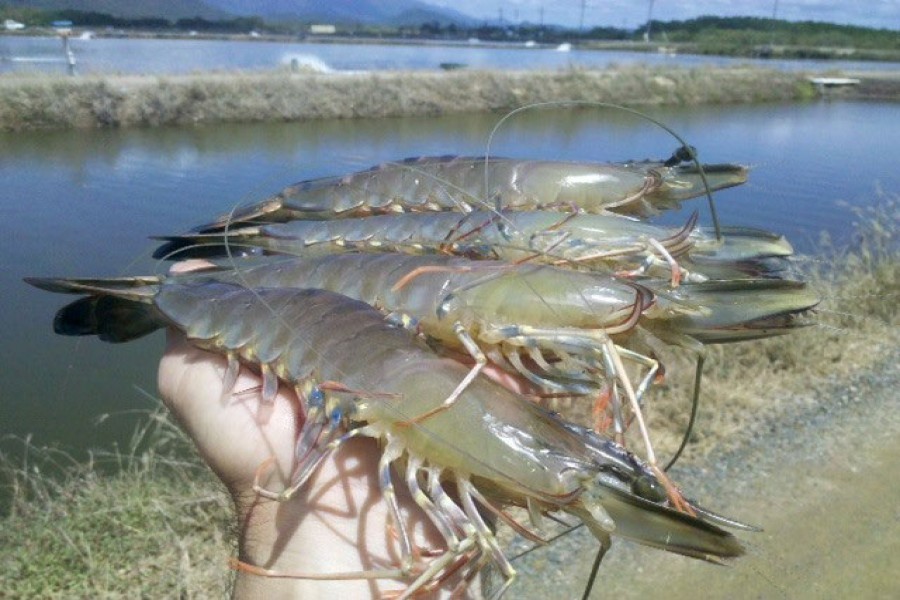Bangladesh should go for commercial cultivation of vannamei species of shrimp or king prawn to capture the global market.
The king prawn currently accounts for 80 per cent of global market share, where Bangladesh has no presence.
Bangladesh is falling behind as commercial cultivation of the species is still far away. It's now mostly in the stage of pilot projects.
This subject was discussed on Sunday by shrimp exporters and cultivators in a seminar at the Khulna’s Shrimp Tower, reports UNB.
At the seminar, they demanded that commercial cultivation of vannamei be allowed instead of running pilot projects.
Exporters and cultivators are thus unable to get loans, they said.
Speakers at the seminar said that there is no alternative to vannamei as the production of tiger shrimp and prawn are decreasing in the country. To save the waning shrimp industry, government’s intervention is needed along with the permission to cultivate vannamei commercially.
Bangladesh Frozen Foods Exporters Association has been appealing to the government for the last 20 years to allow the cultivation of vannamei shrimp to keep the shrimp industry alive.
As a result, the government allowed the pilot cultivation of this variety of shrimp in September 2019. The project is being piloted at the Paikgachha Saltwater Center in Khulna under the Department of Fisheries and the Fisheries Research Institution. The average production is more than 9 tons per hectare.
The association provided statistics that show the average production of tiger shrimp in Bangladesh is 341 kg per hectare. In neighbouring India, the average production of vannamei is 7,102 per kg hectare. This means that the production of vannamei is 6,761 kg more per hectare than that of tiger shrimp.
Vice President of Bangladesh Frozen Food Exporters Association S. Humayun Kabir said that due to lack of raw material (shrimp), only 28 out of 105 frozen fish processing and exporting companies in the country are operational and remaining have closed. The production is meeting only 10-15 per cent of the capacity of the companies and as a result, the processing cost is also increasing.
This industry has come to the brink of collapse. To revive this industry, there is no alternative to increasing production by cultivating vannamei. Fourteen other Asian countries have been exporting vannamei, he said.
He demanded that permission be given for commercial production of vannamei shrimp and save the industry.


